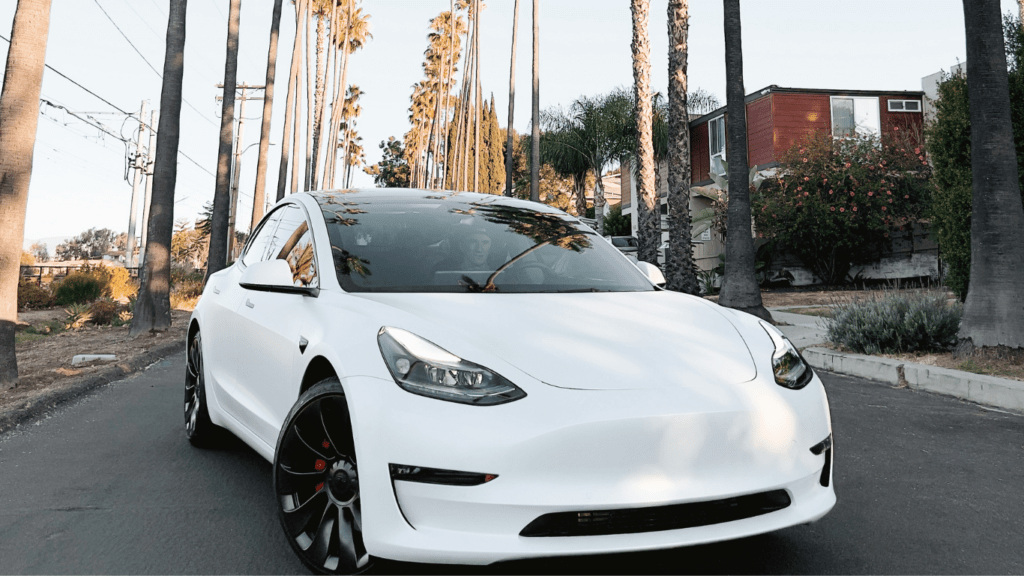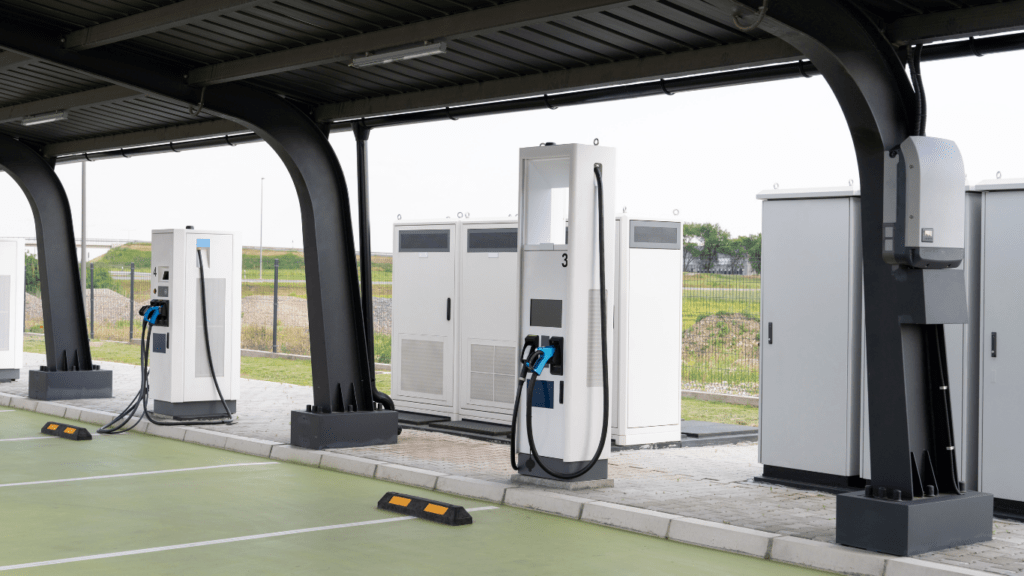Key Trends in the EV Market
The EV market is experiencing unprecedented growth driven by several key trends. First, battery technology is advancing rapidly, lowering costs and increasing driving ranges. According to BloombergNEF, battery prices have fallen 89% in the past decade, making EVs more affordable.
Second, government incentives and regulations are boosting EV adoption. Countries like Norway, where EV sales comprised 54% of total car sales in 2020, offer substantial incentives for electric vehicles. Many governments are setting ambitious targets to phase out internal combustion engines, further driving EV demand.
Third, the expansion of charging infrastructure is crucial. Companies like:
- Tesla
- ChargePoint
- Electrify America
are rapidly increasing the number of charging stations. By the end of 2021, the US had over 100,000 public charging outlets, alleviating range anxiety for drivers.
Fourth, consumer preferences are shifting towards sustainability. A survey by Deloitte in 2021 found that 68% of consumers are actively considering reducing their carbon footprint, and many view EVs as a practical solution.
Finally, technological integration is becoming a standard feature in new EV models. Autonomous driving capabilities, advanced infotainment systems, and over-the-air (OTA) updates are attracting tech-savvy buyers. For instance, Tesla’s Autopilot and General Motors’ Super Cruise offer semi-autonomous driving features that enhance the driving experience.
Leading EV Manufacturers
Several automakers are pushing boundaries in the EV market with innovative models. Here’s a look at some of the leading manufacturers.
Tesla
Tesla leads the EV market with its cutting-edge technology and expansive range. It’s known for vehicles like Model 3 and Model S, which offer long driving ranges and impressive performance. Tesla’s Autopilot system enhances the driving experience with advanced semi-autonomous capabilities. The company also benefits from a comprehensive Supercharger network that reduces range anxiety for EV owners.
Volkswagen
Volkswagen is rapidly expanding its EV lineup with models like the ID.4 and ID.3. These vehicles cater to various needs, from compact city cars to spacious SUVs. Volkswagen aims to make EVs accessible with competitive pricing and advanced features. The automaker plans to launch over 70 electric models by 2028, demonstrating its commitment to dominating the EV market. Their focus on sustainability includes using renewable energy in manufacturing.
Ford
Ford’s commitment to EVs is evident with the release of models like the Mustang Mach-E and the upcoming F-150 Lightning. These vehicles blend performance with practicality, offering powerful electric motors and ample cargo space. Ford is investing billions in EV development, focusing on battery technology and expanding its production capacity. Charging infrastructure partnerships ensure that drivers can conveniently charge their vehicles, enhancing the overall EV ownership experience.
Top New EV Models
Several exciting new electric vehicle models are set to make a significant impact on the market. Each model offers unique features and capabilities designed to meet diverse consumer expectations.
Tesla Model X Plaid
Tesla’s Model X Plaid blends performance and technology. It features a tri-motor setup that delivers 1,020 horsepower, allowing it to accelerate from 0 to 60 mph in just 2.5 seconds. The spacious interior, capable of seating up to seven passengers, includes advanced infotainment systems and a 17-inch touchscreen. The range reaches up to 340 miles on a single charge, ensuring drivers can tackle long journeys without frequent stops. Tesla’s Autopilot system enhances safety and convenience through semi-autonomous driving capabilities.
Volkswagen ID.4
Volkswagen’s ID.4 is aimed at making electric vehicles more accessible. Equipped with a rear-mounted electric motor producing 201 horsepower, it offers a balanced performance without sacrificing efficiency. The ID.4’s range is approximately 250 miles per charge. Its interior is designed for comfort, with a minimalist layout and a 10-inch touchscreen for infotainment and vehicle controls. Volkswagen’s commitment to sustainability is evident in the ID.4, featuring eco-friendly materials throughout the cabin. The ID.4 also supports fast charging, enabling about 60 miles of range in just 10 minutes of charging.
Ford Mustang Mach-E
- Ford’s Mustang Mach-E merges the heritage of the Mustang brand with modern electric performance.
- It offers multiple powertrain options, with the extended-range version delivering up to 346 horsepower and an impressive range of up to 305 miles.
- The Mach-E’s feature set includes next-generation SYNC, a 15.5-inch touchscreen, and over-the-air updates that keep the software current.
- The interior offers a blend of sportiness and practicality, with a spacious layout and quality materials.
- Ford provides a reliable charging network through partnerships, ensuring drivers have access to extensive charging options.
- These models, representing different segments and features, showcase the diverse and innovative directions in which the EV market is heading.
- Each model highlights the manufacturers’ strengths and commitment to advancing electric mobility.
Innovative Features in New EVs

New EV models come packed with groundbreaking features that enhance their appeal to modern consumers. Here, I’ll delve into some of the most innovative advancements in the EV world.
Battery Technology
Battery technology in new EVs has seen significant improvements. Advances in solid-state batteries are offering higher energy densities, translating to longer driving ranges and shorter charging times. For example, the upcoming QuantumScape battery technology is set to increase range by over 50% compared to current lithium-ion batteries. Moreover, manufacturers are incorporating more sustainable materials, reducing the environmental impact of battery production.
Autonomous Driving
Autonomous driving capabilities are rapidly evolving in electric vehicles. Most new EV models now come with advanced driver-assistance systems (ADAS), which include features like lane-keeping assist and adaptive cruise control. Tesla’s Full Self-Driving (FSD) beta is an option in several models and aims to provide a near-complete autonomous experience, with the car handling most driving tasks under supervision. Similarly, Ford’s BlueCruise technology offers hands-free driving on pre-approved highways, paving the way for safer and more convenient commutes.
Charging Infrastructure
Efficient charging infrastructure is crucial for widespread EV adoption. Companies are making strides in expanding charging networks and speeding up charging times. For instance, Tesla’s V3 Superchargers can add up to 200 miles of range in just 15 minutes, significantly reducing downtime during long trips. Moreover, partnerships are emerging between automakers and charging providers. Ford collaborates with Electrify America to offer an extensive network of fast chargers for Mach-E owners. Expansion efforts are eliminating range anxiety and making EVs more practical for everyday use.
Market Impact and Consumer Perspectives
New EV models shaking up the market are driving significant changes in consumer behavior. Understanding how these shifts affect pricing, affordability, and environmental benefits reveals the broader implications for the automotive industry.
Pricing and Affordability
EV pricing has become a critical factor in their market adoption. Initially, high manufacturing costs resulted in steep prices, but recent advancements in battery technology have driven prices down. For example, lithium-ion battery costs dropped by 89% over the past decade. This reduction allowed automakers to produce more affordable EV models. Tesla’s Model 3, starting around $39,990, attracts a broader audience. Volkswagen’s ID.4, priced from approximately $39,995, offers an accessible entry-point for many consumers. Government incentives, such as federal tax credits up to $7,500 in the US, further increase affordability. These financial aids encourage more consumers to switch to electric, accelerating mass adoption.
Environmental Benefits
One primary motivation behind the surge in EV popularity is their environmental benefits. EVs produce zero tailpipe emissions, significantly reducing air pollution and greenhouse gas emissions compared to traditional internal combustion engine vehicles. For instance, the Tesla Model S has zero emissions and boasts a range of up to 405 miles. Moreover, EVs help decrease dependency on fossil fuels, further mitigating environmental impact.
The sustainability aspect resonates with eco-conscious consumers. According to the International Council on Clean Transportation, EVs reduce overall CO2 emissions by 50% compared to gasoline vehicles. Automakers like Volkswagen enhance this appeal by utilizing eco-friendly materials in their EVs, including the ID.4’s interior, which features recycled materials. These environmental benefits strengthen the case for EV adoption among environmentally minded drivers.




